 The pocket is a fairly modern invention, at least if to talk about pockets as we know them now. First pockets appeared in the 1600s, but they were separate items attached to a belt or to the waist. Much later, in the late 19th – early 20th century, pockets became sewn to the clothing. Ukrainian folk dress of the 1700s-1900s also had various pockets. And in most cases, they were beautiful and ornate because they served not only to carry goods but were used as adornments of the outfit. Let’s see how they looked like.
The pocket is a fairly modern invention, at least if to talk about pockets as we know them now. First pockets appeared in the 1600s, but they were separate items attached to a belt or to the waist. Much later, in the late 19th – early 20th century, pockets became sewn to the clothing. Ukrainian folk dress of the 1700s-1900s also had various pockets. And in most cases, they were beautiful and ornate because they served not only to carry goods but were used as adornments of the outfit. Let’s see how they looked like.
Related: Read about unusual “pockets” in Dagestan’s folk dress
Short history of pockets around the world
Pockets as a part of a garment, sewn to the dress, pants, skirt, etc. appeared not so long ago. The first pockets were invented in the 17th century. At first, they were separate pieces, like a pouch or purse, tied to the waist or attached to the belt. Early pockets were pretty large and mostly used by women. The ladies used to put various personal things into these pouches – combs, mirrors, knives, keys, and even snacks and diaries.
In the late 19th century in Europe, lady’s dresses gained a smaller waist, so these pockets also got smaller. And they were worn on top of the attire, visible in this period, while before that, people often wore pockets hidden under their clothes. There were even special built-in slits in the skirts used to get into the pocket underneath.
Only in the 20th century, people en masse started to sew the pockets to the garments and they transformed into a familiar to us part of the outfit. And today, we can’t imagine our life without pockets on our clothing.
Pockets in Ukraine
Ukrainian fashion of the 18th – the beginning of the 20th century differed a lot from Western European fashion. In Ukraine, this period is characterized by the wide usage of folk costumes, hand-made and hand-adorned, produced from local materials, and very symbolic in every aspect of the dress. Of course, European fashion had some influence on clothing in Ukraine, but mostly, on jewelry and noblewomen’s outfits, while ordinary people continued to stick to the tradition.
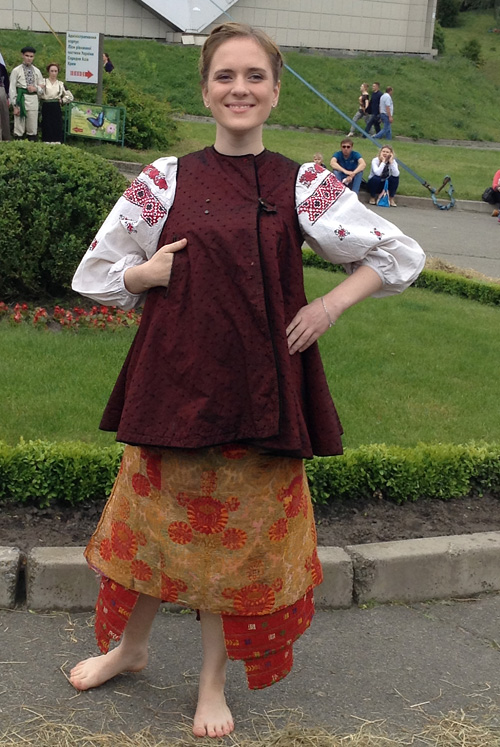
Insert pocket on kersetka. This garment actually has 2 insert pockets situated symmetrically. Northern Ukraine
But if to talk about pockets, Ukrainian women in the 18th-20th centuries also had separate kind of pouches that were used as pockets. They were called “karman” or “haman” and worn over the skirt, attached to the belt (or just tucked under the belt). As they were visible, women decorated them thoroughly – with embroidery, applique, velvet trimming or inserts, and in other ways. These items were pretty and feminine-looking. They were worn with a festive outfit, not in day-to-day life. For example, a woman could wear such a pocket to the market, to a celebration, to the church, etc.
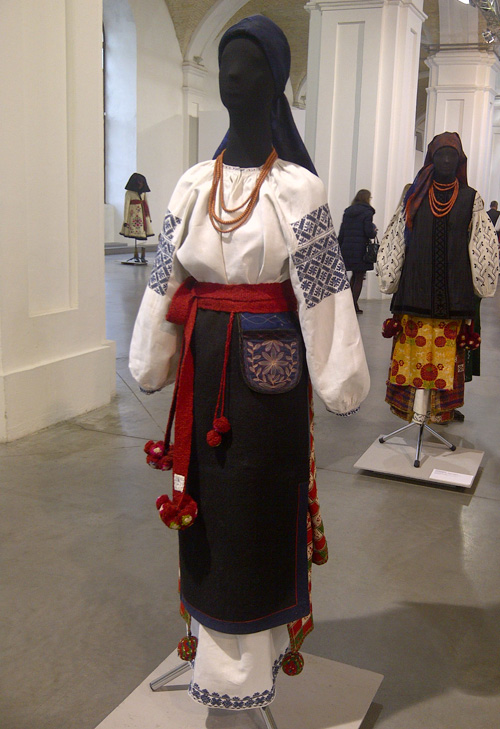

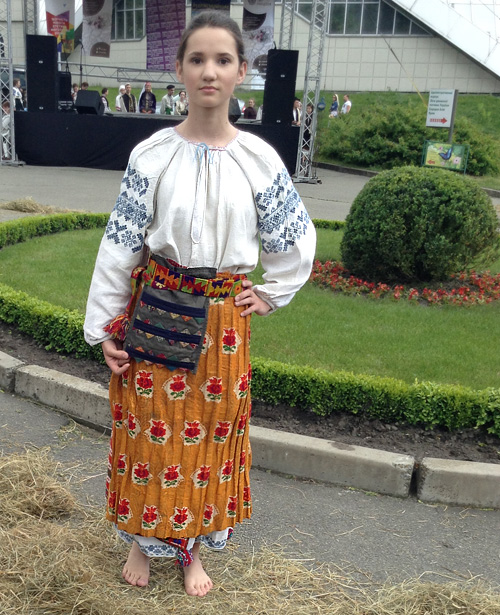
Three examples of decorative “karman” – separate pocket tucked under the belt. Central Ukraine
The pockets sewn to the garments were rare in the early periods but, in the late 19th-20th century, they began to appear. Mostly, the pockets were used on outerwear – jackets, coats, cloaks, vests. People made inseam pockets sometimes, but not often. Patch and insert pockets were more popular.

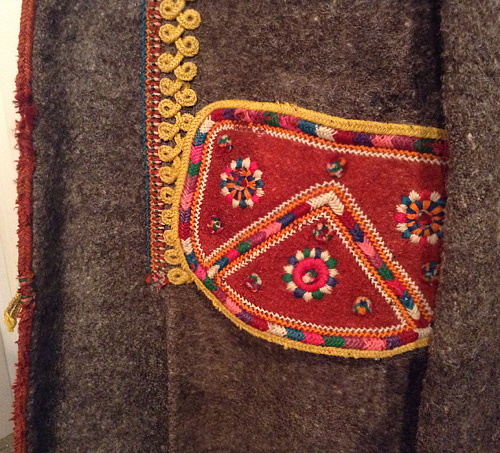
Woolen outer garment called “manta” with an ornate patch pocket. Western Ukraine
Also, even at the time, women had fake pockets. For instance, a traditional Ukrainian garment called “kersetka” – cute feminine waistcoat pleated at the back – could have a real pocket on the right flap and a fake pocket on the left flap.
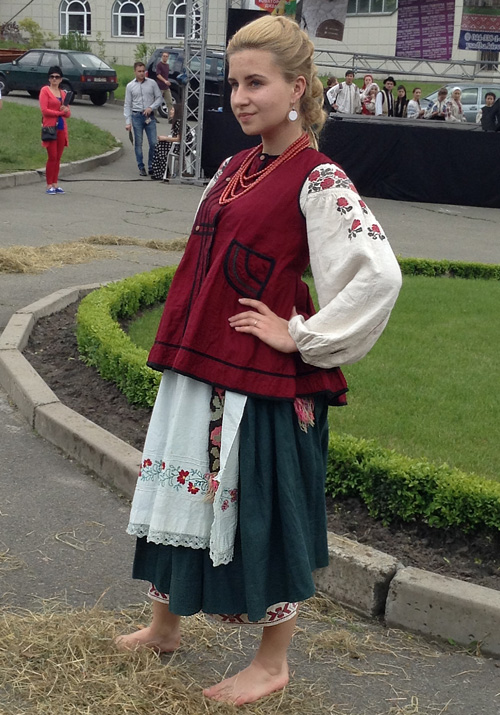
Decorative patch pocket on kersetka. Central Ukraine
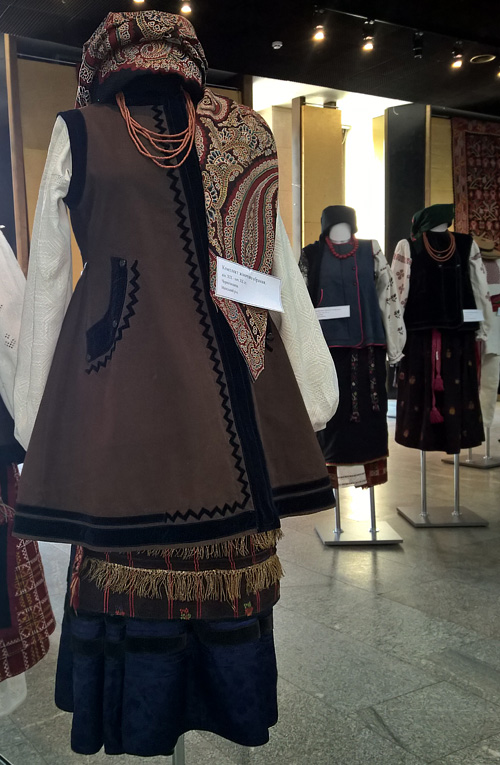
Ukrainian kersetka with two decorative insert pockets
Another interesting thing is that male outer garments sometimes had slits used to reach the pants’ pockets.
The sizes of pockets were different – some of them were tiny, almost decorative, others could be rather deep and roomy.
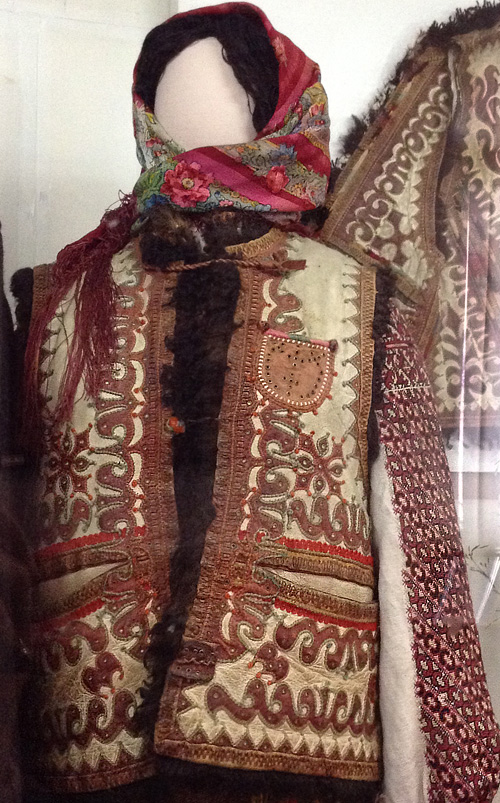
Ukrainian sheepskin vest called “keptar” with one tiny patch pocket and two larger insert pockets. Western Ukraine
In the 18th-20th century, pockets on Ukrainian folk garments served as a decoration just as much as a functioning item. So, they were usually ornate, richly embellished, and accentuated rather than hidden.

Another sheepskin vest called “keptar” with two insert pockets. Western Ukraine


